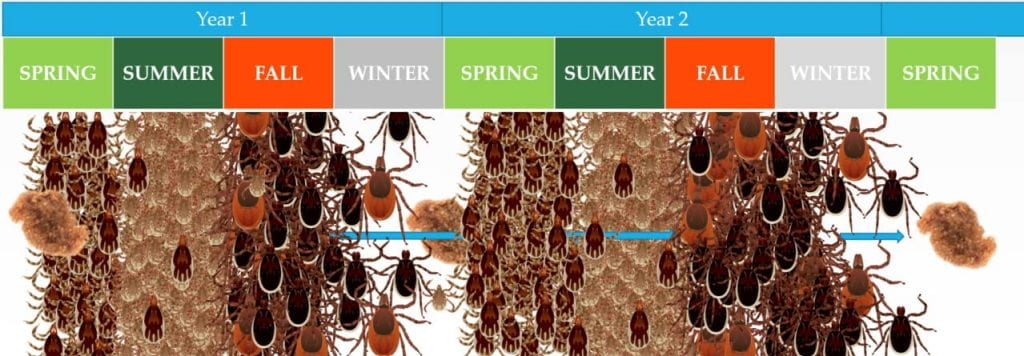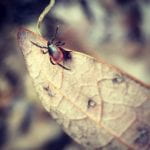“In the spring, at the end of the day, you should smell like dirt.” – Margaret Atwood
The spring of 2020 might have everyone’s yards incredibly tidy, as gardening and yard work are on the short list for things we can all do while social distancing. But COVID-19 isn’t the only disease we need to watch for, and new research shows that protecting yourself from tick-borne pathogens is more important than ever.
They’re active now

Blacklegged ticks are most active in the spring and fall, although you can often find them active year round if conditions are right (above 37o in the winter, cool and damp in the summer). Many still consider ticks to be a summer pest, but the poppy-seed sized nymph starts questing in the spring, and there have already been reports of nymphal activity in New York. These ticks are considered to be the most dangerous life stage due to their small size, so be sure to put all your tick prevention strategies into place now.

Keep it clean
A study looking at the effectiveness of recommended yard management measures against ticks showed the presence of trash could predict an increase in ticks over a clean yard, likely due to an increase in the number of small rodents that find both shelter and food amongst the trash. This was more pronounced in yards without forested areas. Sanitation is an important IPM step, so pick up and pack out that trash!
Check your leaves

How you managed your leaves in the fall can impact your tick risk this spring. New research shows that piling leaves along woodland edges increased the number of nymphs found by three times or more. Whether they were raked to the edge, blown there with a leaf blower, or the wind had its way with them, thicker leaf litter creates suitable microhabitats for overwintering ticks.
Identify areas in your yard where leaves have accumulated. Are they close to areas you spend a lot of time, like the kids’ swing set or your garden? It’s best to remove them. Are they in the far corner where no one ever goes? You can probably leave them, but be aware that the tick risk will likely be higher. Check for yourself. It’s pretty easy to monitor for ticks.
Protect Yourself
So while you are out raking, hauling, bagging, and tidying, be sure to wear long pants tucked into socks and a long-sleeve shirt tucked into your pants – all treated with permethrin, apply repellents to exposed skin, and conduct a tick check as soon as you come indoors.
For more information on protecting yourself from tick bites, visit www.DontGetTickedNY.org.